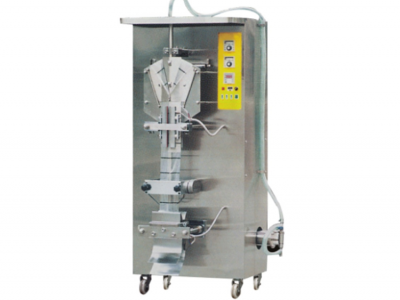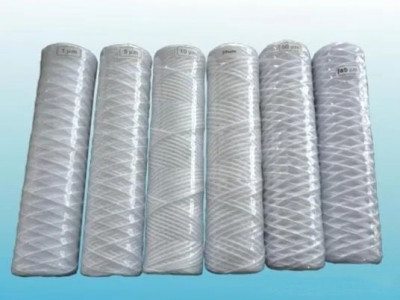January 26, 2022
The hardness of water is mainly composed of cations: calcium (Ca2+ ), magnesium (Mg2+) ions. When the raw water containing hardness ions passes through the resin layer of the exchanger, the calcium and magnesium ions in the water are replaced with sodium ions in the resin, and the resin adsorbs the calcium and magnesium ions while the sodium ions enter the water, so that the water flowing out from the exchanger is the softened water with the hardness ions removed.
The hardness of water is mainly composed of cations: calcium (Ca2+ ), magnesium (Mg2+) ions. When the raw water containing hardness ions passehardness of water is mainly composed of cations: calcium (Ca2+ ).
Product Structure
Runxin control valve: the valve body material is high-strength lightweight corrosion-resistant engineering plastics, lead-free brass.
Corrosion-resistant tank: the tank material is glass fiber reinforced plastic (carbon steel or stainless steel lined tank is optional), the tank is anti-corrosion, pressure resistant and has a long service life.
Uniform water distribution system: using jet water distribution, the effective exchange capacity of resin can be given full play, with precise salt control, no salt pump.
Imported high-performance resin: strong acidic cation exchange resin is used, with low breakage rate and uniform particle size to improve the ion exchange rate.
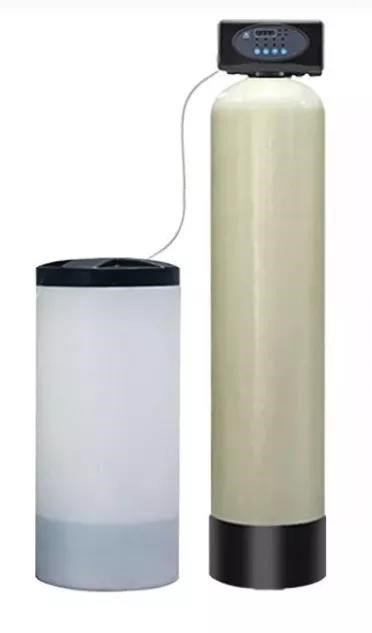
Product Benefit
High efficiency: The overall design of the water softening system is reasonable, so that the effective working exchange capacity of the resin can be given full play.
Labor-saving: high degree of automation, no need to set up manned.
Water saving: water softening system water production rate of 98% or more.
Power saving: using the principle of siphon regeneration, no need for salt pump, power consumption is only equivalent to 1% of manual water softening equipment.
Small footprint: Only the footprint of resin tank and salt tank is required, saving the space occupied by pipeline and salt pump.
Easy adjustment: Users can adjust the regeneration cycle and regeneration time according to actual needs.
Low operation cost: Due to the high degree of automation, the water softener can adapt to the change of water volume, accurately measure the amount of water production and regenerant, avoiding the waste of regenerant during regeneration, and saving a lot of labor cost.
Operation process
Operation:
Raw water under a certain pressure (0.2-0.6Mpa), flow rate, through the controller valve cavity, into the container with ion exchange resin (resin tank), the Na + contained in the resin and the water cations (Ca2+, Mg2+, Fe2+ ……, etc.) for exchange, so that the container water Ca2+, Mg2+ ion content reaches the established requirements, realizing the softening of hard water.
Backwash:
After resin failure, before regeneration, backwashing is carried out with water from the bottom up. The purpose of backwashing is twofold, one is to loosen the resin layer that is pressed during operation through backwashing, which is conducive to full contact between resin particles and regeneration liquid; the second is to make the suspended matter and broken resin accumulated on the resin surface discharged with the backwashing water, so that the water flow resistance of the exchanger will not become larger and larger.
Regeneration salt absorption:
Regeneration once in 24 hours, each regeneration time is 2 hours, the regeneration salt liquid flows through the failed resin layer at a certain concentration and flow rate to restore its original exchange capacity.
Slow Wash:
After the regeneration liquid into the end, the exchanger is still not involved in the regeneration of the exchange of salt liquid, the use of water less than or equal to the regeneration liquid flow rate for cleaning (slow cleaning), in order to make full use of the regeneration of salt liquid and reduce the load of positive washing.
Quick wash (positive wash):
The purpose is to remove the residual regeneration waste liquid in the resin layer, usually at normal flow rate until the effluent is qualified.
Regenerant tank filling:
Fill the regenerant tank with the amount of salt required to regenerate the solution once.
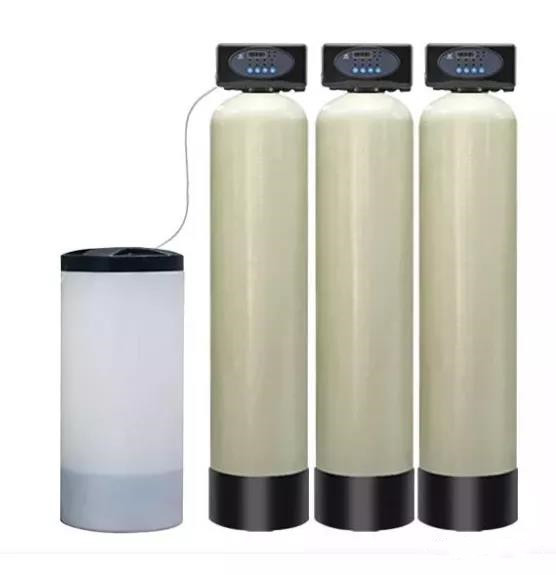
Calculation method of salt consumption and salt concentration
In general, you can calculate the amount of resin (L) * 160 = salt (grams), soft water salt NaCl regeneration solution concentration of 5-12%; such as the amount of resin 10L, generally each regeneration for 10 * 160 = 1600g that is 1.6 kg This needs to be based on the requirements of the incoming water hardness and water quality.
Resin regeneration salt consumption is simply calculated as follows.
NaCl regeneration solution concentration of 5-12%.
The concentration of salt solution is determined by the ratio of the amount of saturated salt solution injected into the water flow of the injector being inhaled, the general concentration of salt solution is between 5-12%, the higher the inlet water pressure mixed with the higher the concentration.
Setting parameters in general: 10 minutes for back-absorption, 30-50 minutes for regeneration, 10-20 minutes for water injection (for salt buckets with float control), you can make small changes on the basis of the above parameters.
The amount of regeneration solution is 2-3 times the volume of resin filling.
i.e. salt required per liter of resin.
Minimum salt consumption: 2 times x 5% concentration = 100g
Maximum salt consumption: 3 times x 8% concentration = 240g
Take the middle value: 2 times x 8% concentration = 160g
The salt consumption for regenerating 1L of resin against the flow is about 80-160g, while the salt consumption for regenerating 1L of resin against the flow is about 160-240g. Nowadays, the automatic control valve is downstream regeneration with less failure and a little more salt consumption.
Add salt to the salt tank, pay attention to the need to use large grains of salt, because there is a gap between the large salt particles for salt dissolution fine salt is not dissolved slowly, and always ensure that the salt is higher than the brine surface that is to see salt and not water, to ensure that it is saturated brine. Against the “salt bucket as long as there is undissolved salt can be” statement.
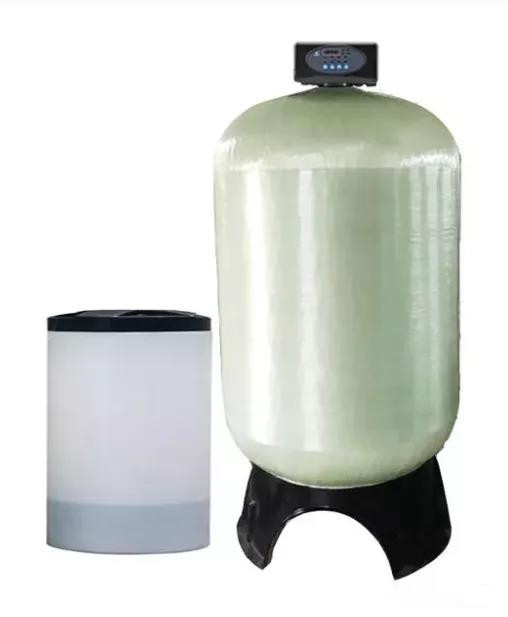
Resin replacement time
Resin replacement time generally varies from a few months to a year, mainly related to raw water quality (raw water hardness), the quality of the resin, water consumption (equipment use) and other factors. Whether the resin needs to be replaced depends on the strength, exchange capacity and regeneration capacity of the resin, for example, if the resin strength is broken to more than 40%, it must be replaced; if the resin exchange capacity drops by 30%, it must be replaced.
Detailed Operating Instructions for Automatic Dosing Systems
December 26, 2024
Characteristics and Applications of Precision Filters
December 19, 2024
